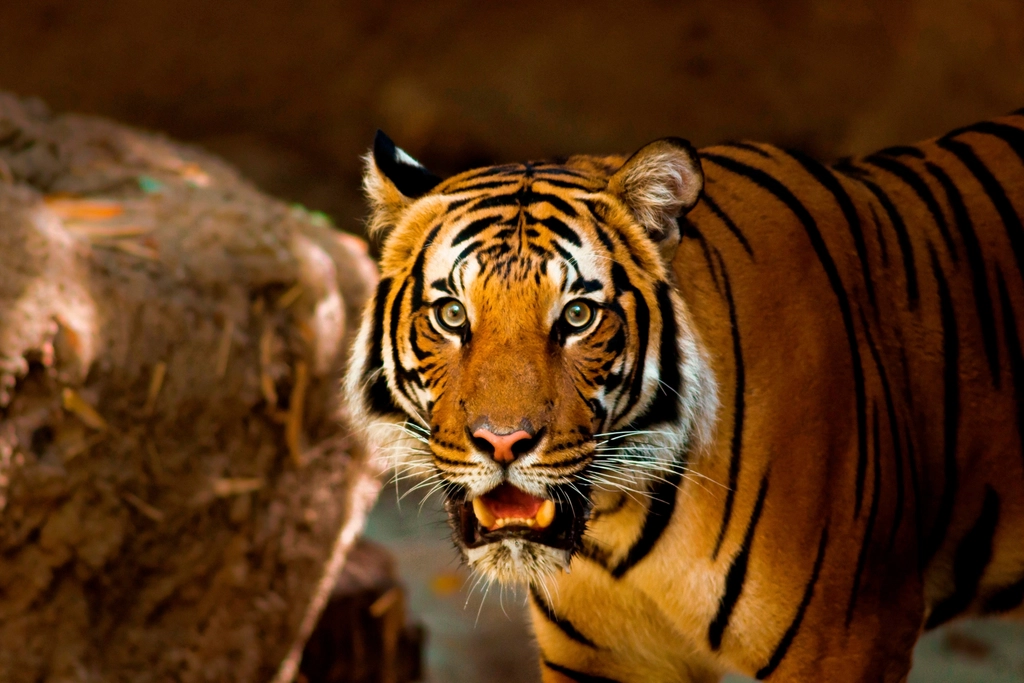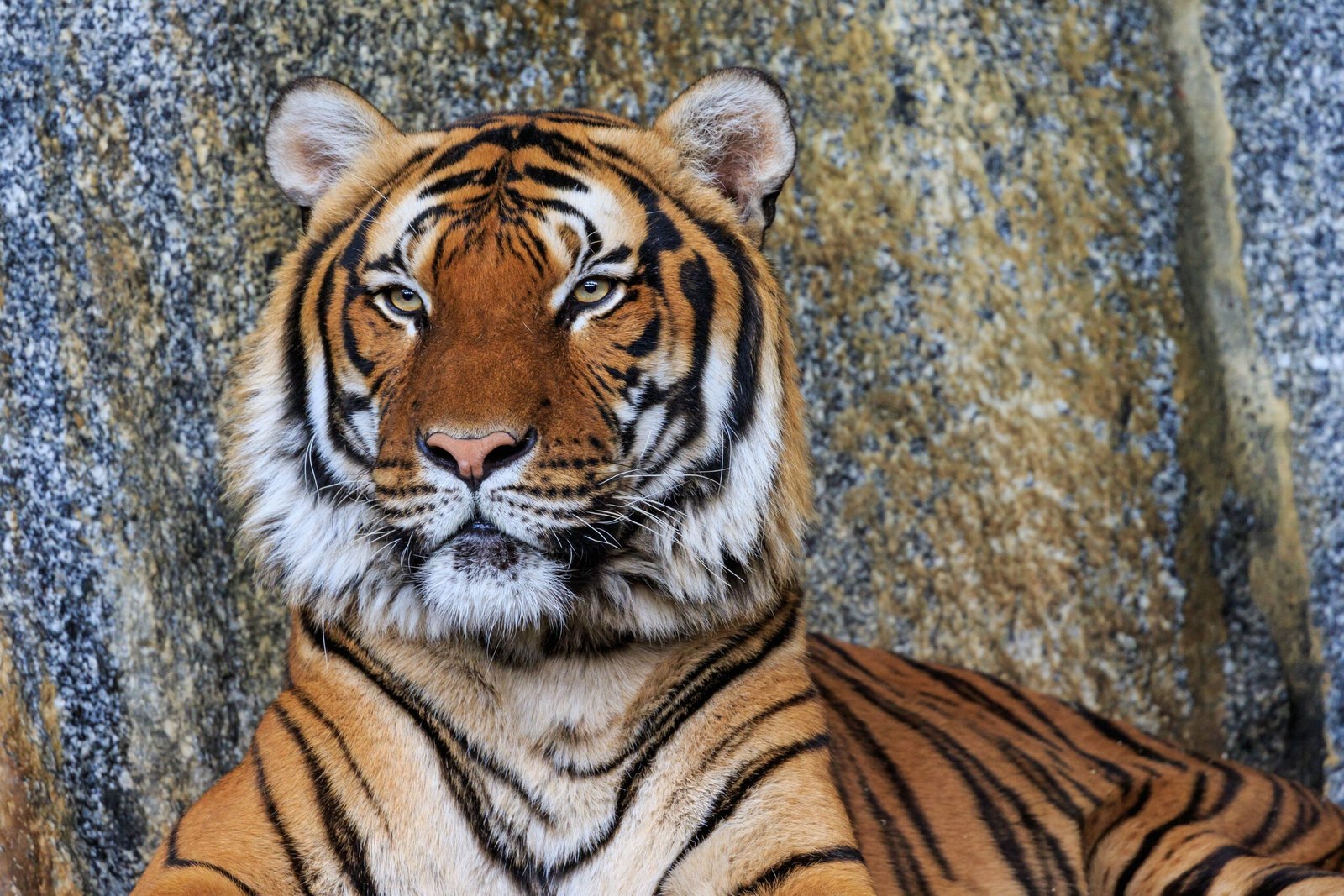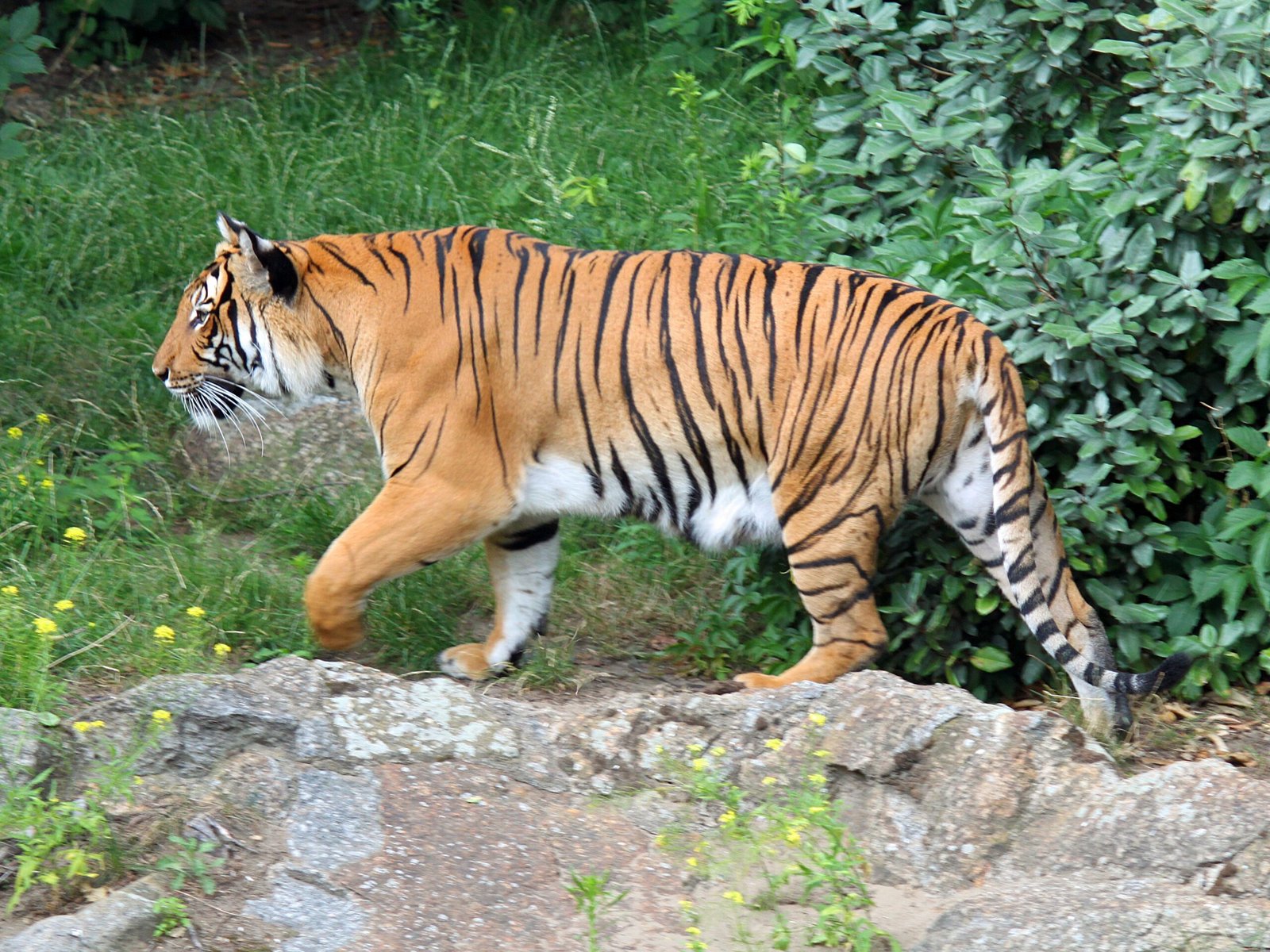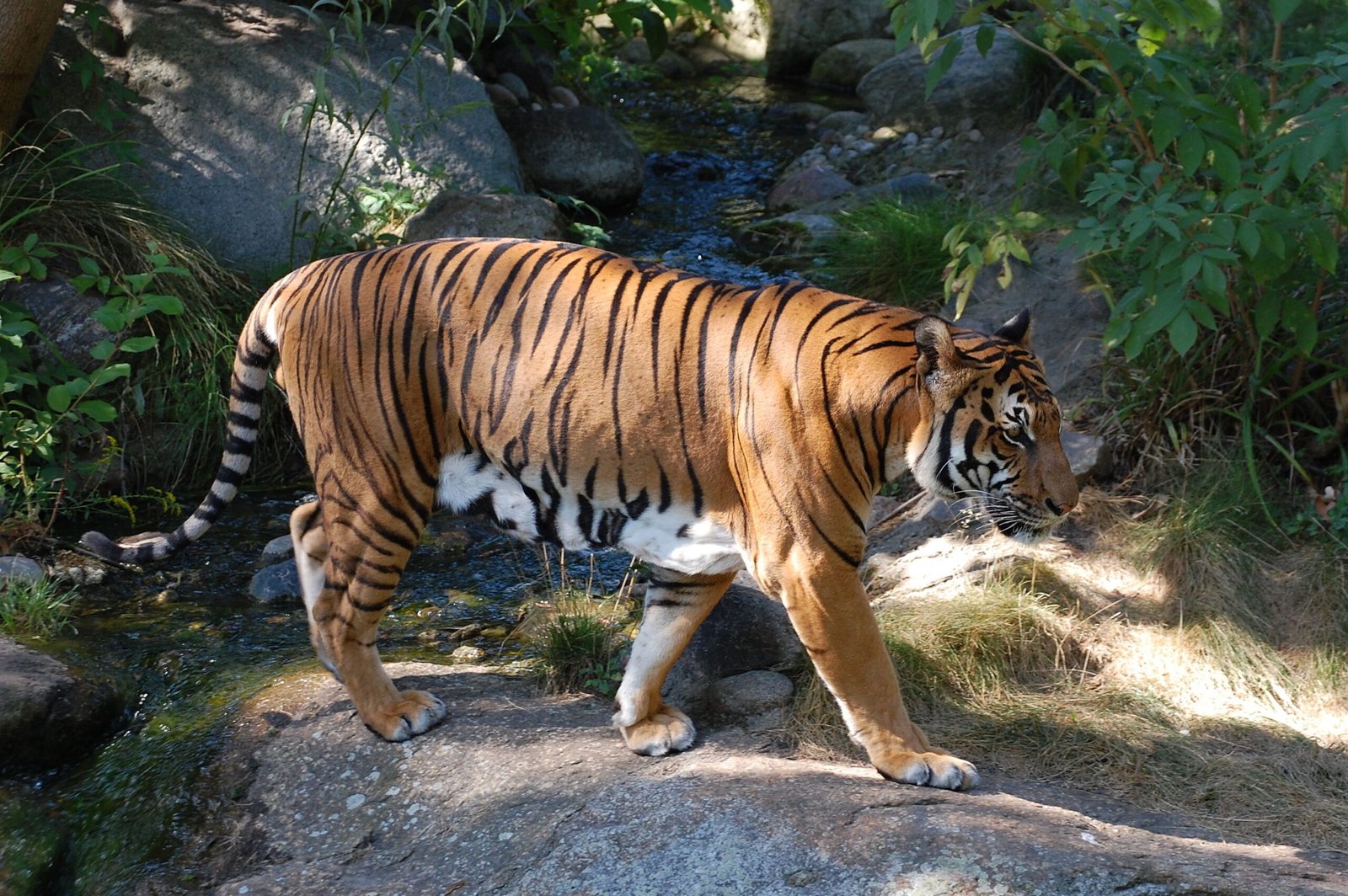Imagine wandering through the dense forests of Southeast Asia, knowing that somewhere, hidden in the shadowy undergrowth, prowls a creature so rare that most people will never see it in their lifetime—the Indochinese tiger. There’s something haunting about an animal whose presence is more myth than reality, yet it still fights for survival in a world that’s shrinking around it. These tigers stir up a blend of awe and sadness: awe for their wild beauty, and sadness for their uncertain future. Their story isn’t just about a vanishing cat, but about the delicate threads that tie all living things together. As you read on, you’ll learn what makes the Indochinese tiger so special, and why its silent struggle matters to us all.
Ghost of the Forest

The Indochinese tiger is sometimes called the “ghost of the forest”—and not just because so few have seen one. Their golden-orange coats, striped with mysterious shadows, blend almost magically into the leaf-dappled light. Locals whisper that if you catch a glimpse, it’s a sign of good luck. But these tigers are experts at slipping away, silent and unseen, even in daylight. I sometimes wonder if they feel like guests in their own home, tiptoeing through thickets and bamboo groves. It’s not just camouflage—it’s survival. Every rustle might mean danger, so they move with the hush of a secret. There’s something heartbreakingly beautiful about how they remain almost invisible, as if the world itself is trying to protect what little is left.
Majestic Yet Modest

Unlike their larger Bengal or Siberian cousins, Indochinese tigers are a bit smaller and lighter on their feet. They aren’t flashy show-offs; they’re more subtle, more restrained. There’s a quiet dignity in the way they carry themselves, blending humility with power. Their faces are a little narrower, and their stripes slightly closer together, almost as if nature painted them with extra care. This modesty makes them all the more endearing—they’re not the kings of the jungle, but the quiet artists, the soft-footed poets of the forest. It’s easy to fall in love with their understated elegance, a reminder that beauty doesn’t always roar; sometimes, it just softly purrs in the shadows.
Home Among Ancient Trees

For centuries, Indochinese tigers have called the lush forests of Thailand, Myanmar, Laos, Cambodia, and Vietnam their home. These forests are like green cathedrals—towering trees, tangled vines, and the constant chorus of birds and insects. Here, every leaf and shadow offers shelter, and every river is a secret path. It’s a home that’s as wild and unpredictable as the tigers themselves. But these forests are shrinking, nibbled away by roads and farms. Even so, the tigers linger, holding fast to the last scraps of wilderness. Their bond with the land is deep and ancient, like a story passed down from one generation to the next. You can almost hear their history echoing through the trees.
Solitary Wanderers

Indochinese tigers are loners at heart. Unlike some animals that gather in groups, these tigers prefer to travel alone, roaming vast territories in search of prey and peace. Solitude is their companion, and it suits them. Each tiger’s patch of forest becomes a kingdom, marked with the scent of wild freedom. There’s something brave and a little sad about their independence—it means they face every challenge alone, from finding food to dodging danger. But maybe that’s what makes their lives so powerful. In a way, their solitude is a quiet rebellion against a noisy, crowded world. I like to think they find comfort in their own company, and maybe, just maybe, that’s enough.
Hunters of the Night

The Indochinese tiger is a master of the night, coming to life as the sun slips below the horizon. In the cool darkness, they stalk deer and wild boar, moving with a patience that’s almost meditative. Their night vision is legendary, letting them see what others can’t. Every hunt is a test of skill and timing—a single misstep and they go hungry. But when they strike, it’s quick and silent. There’s a quiet drama in those moonlit hours, a reminder that the world’s greatest stories often happen when no one is watching. Their nocturnal ways are both a gift and a curse, helping them survive but also keeping them hidden from the world that needs to see them most.
Family Bonds

Though mostly solitary, there’s a softer side to these tigers that shines when it comes to family. A mother tiger is fiercely protective, raising her cubs alone in secret dens. She teaches them to stalk, to hide, to listen—passing down the wisdom of survival with every gentle nudge. Watching a mother and her cubs is like seeing the heart of the forest itself: wild, tender, and full of hope. The cubs, awkward and playful, remind us that every endangered animal is also a promise for the future. Their bond is a thread of warmth in a world that can be cold and unforgiving. It’s a powerful lesson in love, resilience, and the courage to care even when the odds are long.
Vanishing Numbers

The truth is hard to swallow: there may be fewer than 250 Indochinese tigers left in the wild. Their numbers have plummeted over the past century, turning a thriving population into a desperate handful. Every loss echoes through the forest, like a song growing fainter and fainter. It’s easy to feel helpless in the face of such decline, but knowing the facts gives us a chance to act. Each tiger matters. Their scarcity makes every sighting a miracle, and every effort to protect them a race against time. I sometimes imagine what it would feel like to know they were gone forever. That thought alone is enough to spark a stubborn hope—they’re still here, and that means there’s still a chance.
Hunted for Their Beauty

It’s a sad irony that the same beauty that makes the Indochinese tiger so awe-inspiring also puts it in danger. Poachers target them for their striped pelts, bones, and body parts, which are sold in illegal markets. There’s something deeply wrong about turning such wild grace into a commodity. Every tiger lost to poaching is a tragedy that ripples through the ecosystem. The fight against this cruelty is ongoing, but it’s far from over. I wish people could see these tigers not as trophies or medicine, but as living wonders. When you look into their eyes—even just in a photo—you see a world worth saving. Maybe if more of us felt that connection, the hunting would finally stop.
Prey and Predators

Life in the jungle isn’t easy—not even for a top predator. Indochinese tigers rely on a steady supply of deer, wild pigs, and other prey to survive. But as forests disappear and hunting reduces their food sources, tigers are forced to travel farther and riskier paths just to eat. Sometimes they come into conflict with humans, raiding livestock and sparking fear. It’s a tough balance: hungry tigers, worried farmers, and shrinking land. Every meal is a struggle, a reminder that being at the top of the food chain doesn’t mean life is simple. The loss of prey is another link in a chain that could break at any time, making the tiger’s fight for survival even harder.
Masters of Disguise

Those bold black stripes aren’t just beautiful—they’re a work of natural genius. Each tiger’s pattern is like a fingerprint, unique to the individual. The stripes break up their outline, making them nearly invisible in the dappled light of the forest. Even experienced trackers can walk right past a resting tiger and never know it. This camouflage is their superpower, helping them stalk prey and avoid danger. There’s a quiet thrill in knowing that something so large can vanish so completely. It’s as if the forest itself is hiding its most precious secret. Sometimes I think that’s why they seem so mysterious—nature designed them to be seen only by those who truly look.
Echoes in Culture

The Indochinese tiger isn’t just a wild animal; it’s a living legend in the cultures of Southeast Asia. For centuries, stories and symbols of tigers have filled folktales, art, and temple carvings. They’re seen as protectors, spirits, and sometimes even gods. Their roars are said to chase away evil, their images worn as charms for courage. These old beliefs are more than superstition—they’re a testament to the deep bond between people and the wild. Losing the tiger would mean losing a piece of cultural heritage, a living link to the stories of the past. I think that’s part of why their survival matters so much; it’s about holding on to more than just a species.
Signs of Hope

Amid the gloom, there are glimmers of hope. Conservationists and local communities are working together to protect tigers and their habitats. New camera traps have captured rare images of cubs, proving that life still pulses in the shadows. Protected areas are expanding, and anti-poaching patrols are getting smarter. Each success, no matter how small, is worth celebrating. It’s a reminder that nature can bounce back if we give it a chance. The road ahead is long and uncertain, but hope is stubborn. I find it inspiring that so many people—scientists, rangers, villagers—are fighting for an animal they may never see, simply because they believe it’s the right thing to do.
Listening to the Roar

The roar of an Indochinese tiger is a sound few people have ever heard, but those who have say it’s unforgettable. Deep, throaty, and powerful—it’s a voice that shakes the very air. In the wild, a roar can travel for miles, warning rivals and calling to mates. But today, the forests are growing quieter. Each lost tiger means one less roar echoing through the trees. There’s a kind of poetry in that sound—a declaration that the wild still exists, fierce and unbroken. When I think about the future, I hope that roar will never be silenced. It’s a reminder of what’s at stake, and of the wild magic we still have a chance to protect.
Living on the Edge

To survive, Indochinese tigers must navigate a world full of hazards. Illegal snares, encroaching roads, and even climate change threaten their fragile homes. Every step they take is a risk, every day a new challenge. Yet somehow, these cats hang on, adapting to new dangers with quiet resilience. It’s both inspiring and heartbreaking: their strength is remarkable, but it shouldn’t have to be tested so often. Their lives are a daily gamble, a tightrope walk between survival and extinction. I sometimes wish the world could pause, just for a moment, to give them a fighting chance. Their courage deserves nothing less than our deepest respect.
Hidden in Plain Sight

Even in places where people live nearby, the Indochinese tiger remains a mystery. Locals might hear a distant roar or find a paw print in the mud, but actual sightings are rare. It’s as if the tigers exist in a parallel world, just out of reach. This invisibility is both a blessing and a curse. It protects them from hunters, but also makes them easy to forget. I find it humbling to think that something so powerful can go unseen for years. Maybe that’s why stories about tigers linger in the imagination—because they are always just beyond the edge of what we know. Their elusiveness makes every discovery feel like a small miracle.
Guardians of Balance

As apex predators, Indochinese tigers play a crucial role in keeping their ecosystems healthy. By controlling the numbers of deer and wild pigs, they prevent overgrazing and help forests regenerate. Their presence is like a keystone holding the whole arch together. If the tigers disappear, the balance tips, and everything changes—sometimes in ways we can’t even predict. It’s amazing how one animal can have such a ripple effect on its environment. Protecting tigers isn’t just about saving a single species; it’s about safeguarding the web of life that supports us all. Their fate is tied to ours, whether we realize it or not.
Facing the Unknown

So much about the Indochinese tiger remains a mystery. How many are truly left? Where do they roam? What do they need most to survive? Scientists are still searching for answers, piecing together clues from tracks, camera traps, and the rare sighting. There’s a sense of urgency in every new discovery, as if time is running out to solve the puzzle. But there’s also wonder—a feeling that the world still holds secrets worth chasing. Every unanswered question is an invitation to learn, to care, and to act. I think that’s what makes the tiger’s story so compelling: it’s unfinished, and we all have a part to play in how it ends.
Tiny Cubs, Big Dreams

A newborn tiger cub is a bundle of hope—blind, helpless, and completely dependent on its mother. These tiny creatures grow quickly, learning to stalk and pounce through clumsy play. Each cub is a symbol of possibility, a living reason to keep fighting for the species. Their innocence makes their struggle all the more poignant; they don’t know how rare they are, or how much is at stake. Watching them grow is like watching a miracle unfold—one small step at a time. It’s a reminder that even in the darkest times, new life can find a way. Every cub is a chance for the future, if only we can give them the space and safety they need to thrive.
Shifting Shadows

The forests where Indochinese tigers live are changing fast. Logging, farming, and development are carving up their habitats, leaving isolated pockets of wilderness. These changes force tigers into smaller and smaller spaces, sometimes pushing them into conflict with people. The shadows move, and the tigers must move with them. It’s a constant game of adaptation, one that doesn’t always end well. Yet, the forest is resilient, and so are its wild inhabitants. When given a chance, nature can heal and reconnect. The challenge is to slow the destruction and let the shadows become safe havens again. It’s a race against time, but not one without hope.
Unseen Guardians

Behind every surviving tiger are people working tirelessly—often in dangerous conditions—to protect them. Forest rangers patrol remote trails, dismantling snares and risking their lives to confront poachers. Scientists spend months in the field, tracking invisible cats through mud and rain. Local villagers sometimes become the eyes and ears of conservation, reporting sightings or suspicious activity. These quiet heroes don’t seek fame; they just want to give the tigers a chance. Their dedication is both humbling and inspiring. I think it’s important to remember that saving the Indochinese tiger isn’t a solo effort—it’s a community, a chorus of people who care enough to fight for something wild and wonderful.
Myth Meets Reality

For many, the Indochinese tiger lives somewhere between legend and reality. It haunts ancient stories and modern headlines, its image gracing everything from currency to festival banners. Yet, the real tiger is flesh and blood—vulnerable, hungry, and brave. Bridging the gap between myth and reality means seeing the tiger as it truly is, not just as a symbol. It’s easy to romanticize such a rare creature, but the truth is both more simple and more urgent. They need forests, food, and freedom—not just admiration from afar. The magic of the tiger is real, but its survival depends on real-world choices, made by people just like us.
Learning to Coexist

Finding ways for people and tigers to live side by side is one of the greatest challenges—and hopes—of conservation. In some areas, villagers are learning to protect livestock, use fences, and even benefit from eco-tourism. It’s not always easy; fear and hardship run deep. But stories of peaceful coexistence are growing, showing that change is possible. When communities see value in living tigers, not just dead ones, everything shifts. It’s a slow process, full of setbacks and small victories. But every step forward is a step towards a future where both people and tigers can thrive. That’s a vision worth holding onto, no matter how difficult the journey.
Nature’s Silent Alarm

The fate of the Indochinese tiger is more than just an animal story—it’s a warning bell for the health of Southeast Asia’s forests. When tigers disappear, it signals that something is deeply wrong with the land itself. Forests without tigers lose their balance, and eventually, their richness. Saving the tiger means saving an entire living world, full of creatures big and small. It’s a reminder that everything is connected, and that even the most elusive cat is part of a larger story. Sometimes, nature’s alarms are quiet—a missing paw print, a silent night. It’s up to us to listen, and to answer before it’s too late.
Carrying the Flame

Every person who learns about the Indochinese tiger carries a tiny spark of hope. Stories, photos, and memories become a flame that can light up even the darkest corners of the forest. Whether you’re a scientist, a student, or just someone who cares, your attention matters. Awareness is the first step to action, and action is what keeps the flame alive. It’s easy to feel small in the face of such a big problem, but together, those sparks can become a fire. The tiger’s story is still being written, and each of us has a chance to help shape its ending. That’s the quiet power of caring—one heart at a time.
Conclusion

There’s something timeless and magical about cats—their grace, their mystery, their wild spirit. The Indochinese tiger is a living reminder of all that’s beautiful and fragile in the natural world. Their struggle is not just their own, but a reflection of our relationship with nature itself. If we can find room in our hearts and lives for these nearly invisible tigers, perhaps we can find ways to protect all that is rare and wonderful. The future of the Indochinese tiger is uncertain, but the wonder they inspire is very real. Will we let them slip quietly into legend, or will we choose to help them roar once more?

Suhail Ahmed is a passionate digital professional and nature enthusiast with over 8 years of experience in content strategy, SEO, web development, and digital operations. Alongside his freelance journey, Suhail actively contributes to nature and wildlife platforms like Feline Fam, where he channels his curiosity for the Feline into engaging, educational storytelling.
With a strong background in managing digital ecosystems — from ecommerce stores and WordPress websites to social media and automation — Suhail merges technical precision with creative insight. His content reflects a rare balance: SEO-friendly yet deeply human, data-informed yet emotionally resonant.
Driven by a love for discovery and storytelling, Suhail believes in using digital platforms to amplify causes that matter — especially those protecting Earth’s biodiversity and inspiring sustainable living. Whether he’s managing online projects or crafting wildlife content, his goal remains the same: to inform, inspire, and leave a positive digital footprint.






